Country
Crash of a De Havilland DH.106 Comet 4C in Tripoli: 16 killed
Date & Time:
Jan 2, 1971 at 0325 LT
Registration:
SU-ALC
Survivors:
No
Schedule:
Algiers - Tripoli - Cairo
MSN:
6439
YOM:
1960
Flight number:
MS844
Crew on board:
8
Crew fatalities:
Pax on board:
8
Pax fatalities:
Other fatalities:
Total fatalities:
16
Aircraft flight hours:
25592
Circumstances:
Flight MS844 was a scheduled international flight from Algiers to Cairo with an intermediate stop at Tripoli. Departure on the outbound flight Cairo - Tripoli - Algiers had been delayed 29 hours due to adverse weather conditions along the route. At Algiers, following testing of the systems, the fire warning light of Zone I in n° 3 engine stayed "ON". Local personnel, who were not familiar with Comet aircraft, attempted to rectify the discrepancy and this caused a further delay of nearly 2 1/2 hours. The light eventually extinguished and the pilot-in-command, who had been considering cancellation of the flight and returning to Cairo without passengers, then decided to proceed with the service. There was no evidence that the crew had asked for, or received, a weather forecast before departing Algiers for Tripoli; however, it is possible that a verbal forecast was obtained. The QNH at Algiers was 1011 mb. As the aircraft entered the Tripoli Control Area, the crew was provided with a weather report which included a horizontal visibility of 1000 meters due to sand haze. This was below the minimum authorized by the airline; however, the vertical visibility was unlimited. The pilot-in-command checked Benina weather and then decided to attempt a landing at Tripoli wfth Malta as the alternative: he stated that he had 3 hours 50 minutes endurance. Both Tripoli Control and Tripoli Tower gave him a QNH of 1008 mb, additionally Tripoli Control gave an opinion that visibility was better than 1 000 m, and Tripoli Tower gave an opinion that he could see "3 kilometres". The airport's VOR was not available as it required calibration; the only ground aid available was the ADF facility. Coming from Algiers, the approach over the beacon located 0.6 NM north of Runway 18, the runway in use, involved joining the holding pattern in the opposite direction to the circuit so that a tear drop turn was necessary to re-approach the beacon on the outbound leg on an ADF procedure turn. Shortly after passing the beacon for the first time, the pilot-in-command reported at 3 000 ft. The last message received was when the aircraft was passing the beacon outbound for an ADF approach procedure turn. The altitude was not stated subsequent to entering the holding pattern.The flight path to Runway 18 crossed an expanse of sand dunes 160 ft AMSL rising steeply to 425 ft AMSL and then falling te the runway threshold elevation of 240 ft. The aircraft struck sand dunes at an elevation of 395 ft approximately 7 km before the threshold of the runway. The accident occurred at 01.25 hours GMT. The aircraft was destroyed and all 16 occupants were killed.
Probable cause:
The probable cause of the accident was the decision of the pilot-in-command to land while the prevailing visibility was below the Airline's minimum for that airport at night, and for undetermined reasons, the aircraft was lower than the altitude it ought to have been for an ADF approach to the runway in use. The weather was a contributing factor.
Final Report:
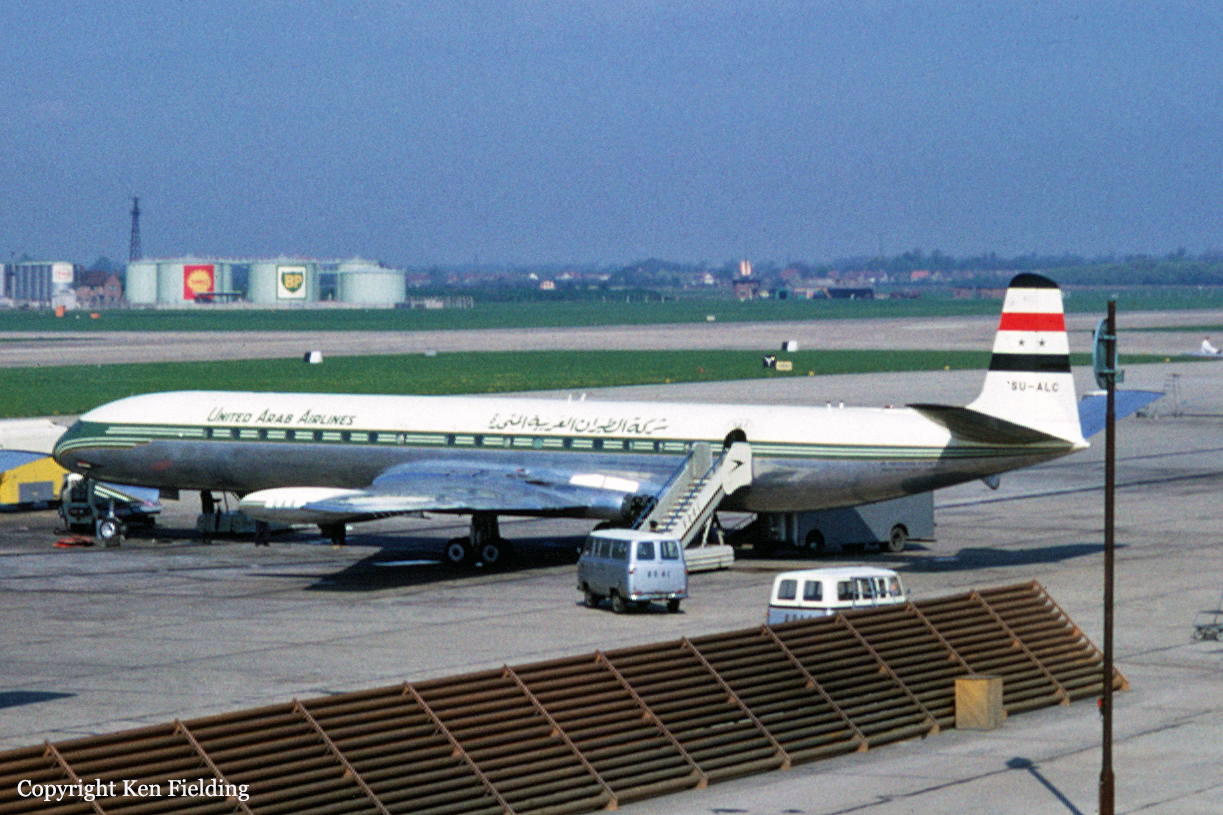
Crash of a De Havilland DH.106 Comet 4 in Newcastle
Date & Time:
Oct 7, 1970
Registration:
G-APDL
Survivors:
Yes
Schedule:
Newcastle - Newcastle
MSN:
6413
YOM:
1959
Crew on board:
11
Crew fatalities:
Pax on board:
0
Pax fatalities:
Other fatalities:
Total fatalities:
0
Circumstances:
The crew (pilots and engineers) was engaged in a local training flight at Newcastle Airport. On approach, the crew forgot to lower the gear and the airplane belly landed. It slid for several yards before coming to rest. All 11 occupants escaped uninjured while the aircraft was damaged beyond repair.
Probable cause:
The crew omitted to carry out the pre-landing checks while practicing a flapless landing.

Crash of a De Havilland DH.106 Comet in Barcelona: 112 killed
Date & Time:
Jul 3, 1970 at 1805 LT
Registration:
G-APDN
Survivors:
No
Schedule:
Manchester - Barcelona
MSN:
6415
YOM:
1959
Flight number:
DA1903
Crew on board:
7
Crew fatalities:
Pax on board:
105
Pax fatalities:
Other fatalities:
Total fatalities:
112
Captain / Total hours on type:
605.00
Copilot / Total hours on type:
189
Aircraft flight hours:
25786
Circumstances:
Comet G-APDN departed Manchester at 1608 for a charter flight to Barcelona. ATC delays in the Paris area resulted in a different route to be flown. At 1753LT the pilot contacted Barcelona ACC. The aircraft was then cleared to descend from FL220 to FL90. At 1759LT the flight switched to Barcelona Approach. Barcelona Approach cleared the crew direct to the Sabadell beacon and cleared them to descend to FL60. While carrying out a left turn to a heading of 140°, as instructed by Barcelona Approach, the crew mistakenly reported passing the Sabadell NDB. At that time another aircraft overflew Sabadell, causing the error to go unnoticed by the controller. The controller then cleared the Comet to descend to 2,800 feet. At approx. 1805LT the aircraft struck beech trees on the northeast slopes of the cloud-covered Les Agudes peak at an altitude of about 3,800 feet and crashed. The wreckage was found in the Sierra del Montseny, near the village of Arbúcies. The aircraft was totally destroyed and all 112 occupants have been killed.
Probable cause:
To sum up, it can be deduced that the combination of erroneous information regarding reporting points, together with the existence of a radar echo over Sabadell NDB (coinciding with the report from the aircraft of passing that reporting point), led both the aircraft and APP to believe, erroneously, that the aircraft was already over Sabadell; this was an involuntary error (on both sides: ATC and aircraft) which was physically impossible to correct when Air Traffic Control realised it.
Final Report:













Crash of a De Havilland DH.106 Comet 4C in Munich
Date & Time:
Feb 9, 1970 at 2004 LT
Registration:
SU-ALE
Survivors:
Yes
Schedule:
Munich - Cairo
MSN:
6444
YOM:
1960
Crew on board:
9
Crew fatalities:
Pax on board:
14
Pax fatalities:
Other fatalities:
Total fatalities:
0
Circumstances:
Following a normal takeoff roll, the captain pull the control column and started the rotation. During initial climb, at a height of 30 feet, severe vibrations were encountered. The captain decided to land back onto the runway but the available distance was insufficient. Unable to stop within the remaining distance, the airplane overran, lost its undercarriage and came to rest in flames in an open field. Fire was quickly extinguished and all 23 occupants were evacuated safely. Nevertheless, the aircraft was damaged beyond repair.
Probable cause:
Severe vibrations after liftoff caused by an excessive accumulation of ice on the wings. Inappropriate actions on part of the flying crew.
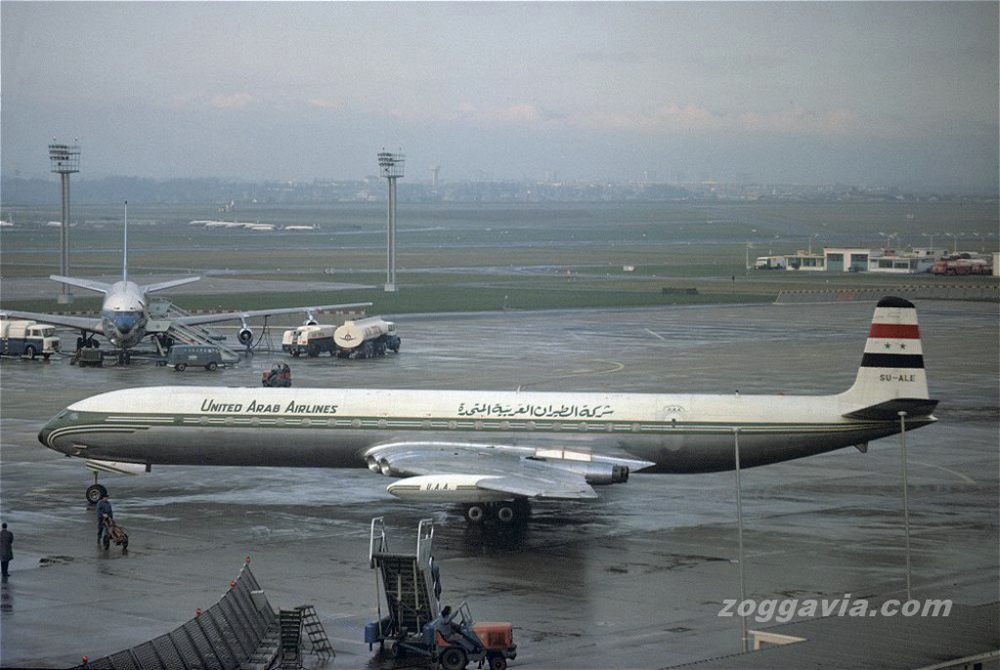
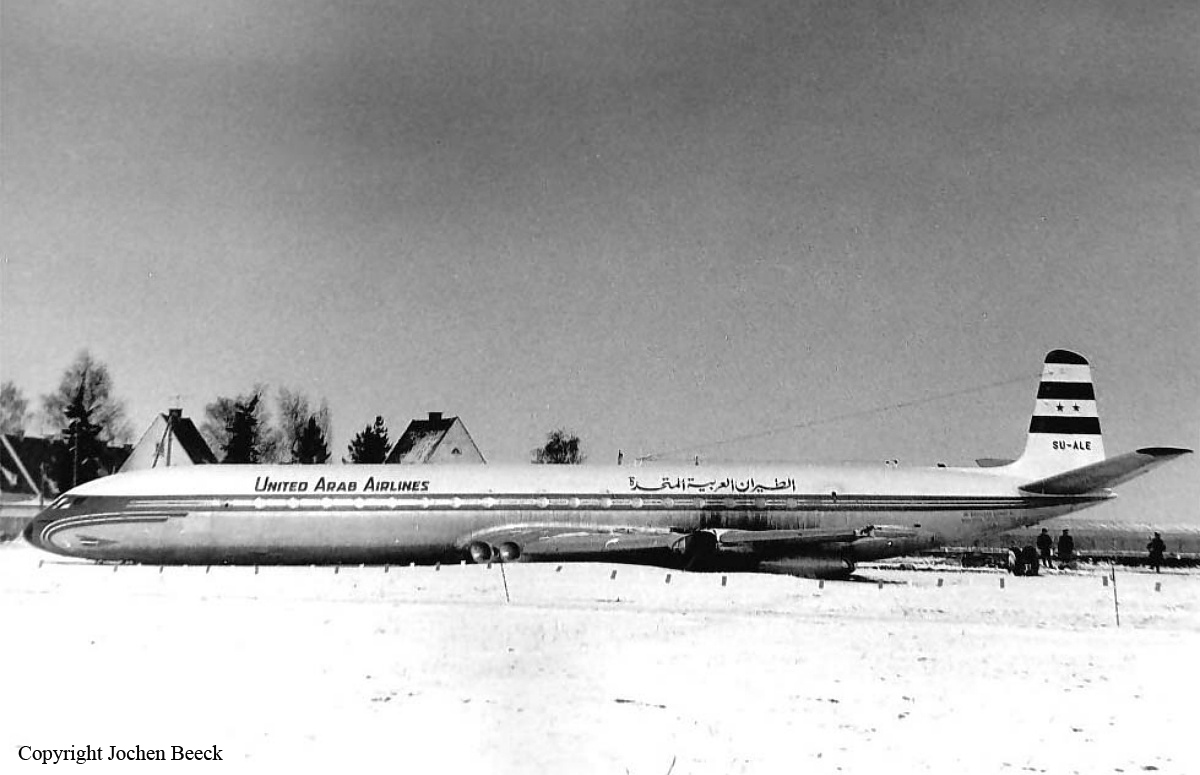

Crash of a De Havilland DH.106 Comet 4C in Addis Ababa
Date & Time:
Jan 14, 1970 at 0418 LT
Registration:
SU-ANI
Survivors:
Yes
Schedule:
Cairo - Khartoum - Addis Ababa
MSN:
6475
YOM:
1964
Flight number:
MS755
Crew on board:
9
Crew fatalities:
Pax on board:
5
Pax fatalities:
Other fatalities:
Total fatalities:
0
Circumstances:
The approach to Addis Ababa-Haile Selassie I Airport was completed by night and marginal weather conditions. On final, at an altitude of 150 feet, the pilot-in-command made a visual contact with runway 32 but the aircraft was 250 feet to the right of the extended centerline. The captain decided to make a turn to the left when the aircraft banked left, lost height and struck the ground. Out of control, it crashed by the runway and came to rest. All 14 occupants were injured and the aircraft was destroyed.
Probable cause:
Wrong approach configuration on part of the flying crew who continued the approach below minima weather conditions and passed the minimum descent altitude without any visual contact with the ground or runway. In such conditions, the captain should make a go-around procedure.
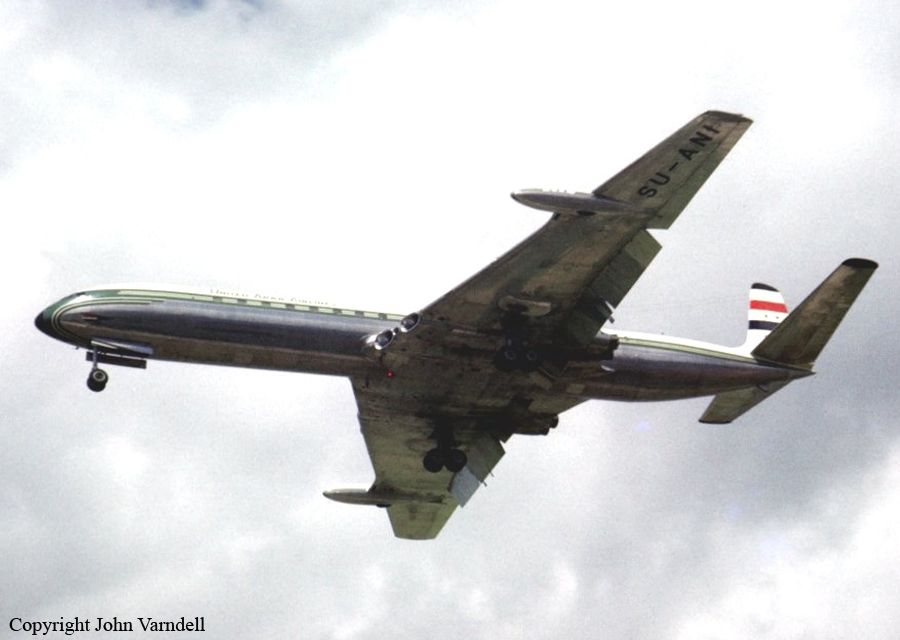
Crash of a De Havilland DH.106 Comet 4B off Demre: 66 killed
Date & Time:
Oct 12, 1967 at 0325 LT
Registration:
G-ARCO
Survivors:
No
Schedule:
London - Athens - Nicosia - Cairo
MSN:
6449
YOM:
1961
Flight number:
BE284
Crew on board:
7
Crew fatalities:
Pax on board:
59
Pax fatalities:
Other fatalities:
Total fatalities:
66
Captain / Total hours on type:
2637.00
Copilot / Total hours on type:
2471
Aircraft flight hours:
15470
Circumstances:
G-ARCO left London-Heathrow Airport at 2145 hours on 11 October 1967, operating British European Airways (BEA) flight BE284 to Athens. It carried 38 passengers and 2 154 kg of freight, including 920 kg for Nicosia. The aircraft arrived at Athens at 0111 hours on 12 October and reached its parking area on the apron at about 0115 hours. Six Athens passengers were disembarked. At Athens the flight became Cyprus Airways flight CY 284 for Nicosia. Four passengers and the captain remained on board the aircraft whilst it was refuelled and serviced for the flight to Nicosia. The Captain and the two First Officers continued with the aircraft but the cabin staff was changed, the new staff being those of Cyprus Airways. Twenty-seven passengers joined the aircraft at Athens for the flight to Nicosia. From the evidence of the BEA and Olympic Airways staff at Athens the aircraft's transit was normal. It was refuelled to .a total of approximately 17 000 kg and only one minor defect, relating to the Captain's beam compass, was recorded in the technical log. This defect was dealt with by the ground crew. The baggage for the passengers joining the aircraft for the flight to Nicosia and the freight was placed in holds 1 and 2; the baggage and freight from London to Nicosia remained in holds 4 and 5. The aircraft taxied out at 0227 hours and was airborne on schedule at 0231 hours; it was cleared by Athens Control to Nicosia on Upper Airway Red 19 to cruise at flight level (FL) 290. After take-off it climbed to 4 000 ft on the 180' radial of Athens VOR and then turned direct to Sounion, which it reported crossing at 0236 hours. At 0246 hours, the aircraft reported that it was crossing R19B at FL 290 and was estimating Rhodes at 0303 hours. At 0258 hours at an estimated position 3fi041'N, 27O13'E, the aircraft passed a westbound BEA Comet which was flying at FL 280. Each aircraft saw the other; the Captain of the westbound aircraft has staked that flight conditions were clear and smooth. G-ARC0 passed Rhodes at 0304 hours and at 0316 hours reported passing R19C at FL 290 and that it estimated passing abeam of Myrtou, Cyprus, at 0340 hours. This message was not received by Athens direct but was relayed by the westbound aircraft. G-ARC0 was then cleared by Athens to change to the Nicosia FIR frequency. The recording of the R/T communications with Nicosia shows that G-ARC0 called them to establish contact; the time of this call was 0318 hours + 9 seconds and it is estimated that the aircraft would then have been at a position 35° 51'N 30°17' E, approximately 15 NM to the east of R19C. Nicosia replied to the aircraft with an instruction to go ahead with its message but no further transmission was heard. Nicosia continued to try to contact the aircraft but without result and overdue action was therefore taken. At 0440 hours R.A.F. Search and Rescue aircraft took off from Akrotiri; at 0625 hours wreckage from G-ARC0 was sighted in the vicinity of R19C, the last reported position. None of the 66 occupants survived the crash.
Probable cause:
The aircraft broke up in the air following detonation of a high explosive device within the cabin. A high explosive device detonated within the cabin while the aircraft was cruising at FL290. The explosion severely damaged the aircraft causing an out-of-control condition followed by structural break-up at a lower altitude.
Final Report:
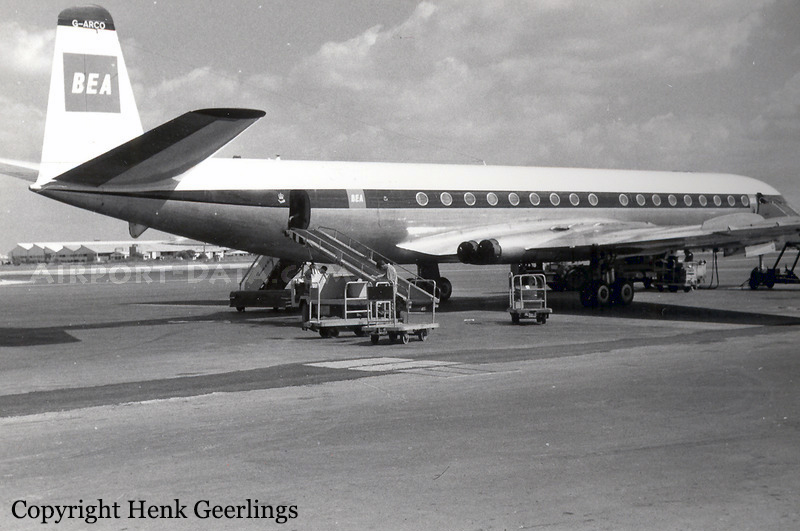
Crash of a De Havilland DH.106 Comet 4 at Paya Lebar AFB
Date & Time:
Mar 22, 1964 at 1619 LT
Registration:
G-APDH
Survivors:
Yes
Schedule:
Bangkok – Kuala Lumpur – Singapore
MSN:
6409
YOM:
1958
Flight number:
ML511
Crew on board:
8
Crew fatalities:
Pax on board:
60
Pax fatalities:
Other fatalities:
Total fatalities:
0
Aircraft flight cycles:
4500
Circumstances:
The flight from Kuala Lumpur was uneventful until the airplane approached Singapore. Visibility was good as the co-pilot started the approach to runway 02. The flare was initiated a little late and the airplane touched down firmly. The Comet bounced and floated a few feet over the runway. During the bounce the starboard wheel bogie and part of the landing gear leg dropped off. The crew tried to hold the wing off the ground after the aircraft settled back onto the runway. Finally the wing contacted the runway. The engines were shut down and left wheel brakes applied before the aircraft came to rest. At the time of the accident, the gears totalized 4,500 landings and was certified for 8,000.
Probable cause:
The landing gear leg, which had previously been weakened by fatigue, failed on first impact during the landing.




